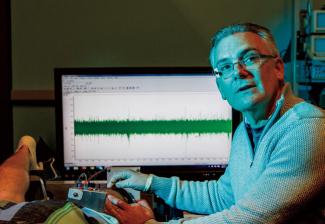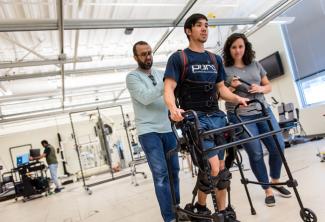Support us do more
Our Research Cluster is crucial for developing new tools, therapeutic interventions and technologies to reduce the likelihood and impact of balance instability and falls.

Our team has developed one of the most comprehensive collections of cutting-edge balance measurement tools and techniques. Few other research groups have the capacity and expertise to study balance from the single-motor unit and primary sensory afferent level, all the way to whole-body postural responses, and measure all aspects of human balance control. Our research is focused on the following 3 areas:




